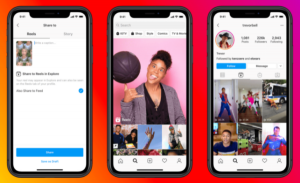To help you improve your time management skills as a leader, we’ve gathered insights from various professionals, including founders, CEOs, and business coaches. From hosting individual meetings and reflection to limiting open door policy time, discover 11 effective time management strategies these experts swear by in their leadership roles.
Host individual meetings and reflection
Time management can be a challenge for leaders because of their often-hectic schedules and the pressure that comes with making responsible decisions. One strategy I find effective in managing my time is scheduling individual meetings with those who report to me.
After every five meeting blocks, I allow for a brief break for reflection. This uncommon approach allows me to stay fully engaged during each session and ensure that no individual has been neglected; then, it gives me the space for assessment and resetting goal structure prior to continuing on to the next set of meetings.
This strategy helps minimize the risk of burnout/frustration while also affording team members much-needed direct interaction with leadership.
Julia Kelly, managing partner, Rigits
Utilize the Pomodoro technique
As a leader and people manager, the key to my workload has been ensuring that the short blocks of time I have between calls and meetings are maximized as much as possible.
I’ve tried many methods—time blocking, checking emails at set times, and more—yet I’ve found that using Francesco Cirillo’s Pomodoro technique has been most effective in ensuring my productivity is as high as possible day to day.
The main objective of the technique is to take short bursts of time to work on a set task, then take a break (make a coffee, context switching, etc.) before the next quick burst.
I try to use a productivity planner, yet allow myself flexibility, so as not to get frustrated if a certain day does not go to plan. Working for a fast-paced organization means that flexibility is needed regularly.
Rosie Gladden, marketing director, ImageX
Apply the “Touch it Once” principle
The “Touch it Once” (TIO) principle means handling a task right away the first time you look at it, so you don’t have to come back to it later. Here’s how it works for me: If I can do a task in 10 minutes or less, I do it right away. If not, I either delegate it to someone else or set it aside for at least a week. I receive a plethora of emails daily, many of which require quick decisions.
If I’m just bcc-ed, usually my action is no action at all. If I know someone who knows an answer better—I forward an email. My focus is on being helpful instead of crafting a beautifully looking but useless email.
This principle helped me to hire a very strong developer a year ago. We did not postpone the decision and sent him an offer faster than others. He proceeded exactly with us for this reason. The TIO principle helps our company win the top talent and the best customers and prosper while others keep postponing their tasks.
Vladislav Podolyako, founder and CEO, Folderly
Sequencing schedules and time blocking
Being intentional with time blocking both personal and team schedules and then sequencing them appropriately across the week will help you be a more effective leader, avoid the cognitive cost of context-switching, and improve the flow of information across your business.
For example: grouping all of your direct report 1-1s into a single day or block not only helps you stay mentally in the flow of “coaching mode,” but, when strategically placed during the week, will make communication flow vastly more effective.
Let’s say you have an executive meeting on Mondays and a wider team meeting on Wednesdays. Sandwiching 1-1s between these allows you to communicate strategic decisions from the exec meeting to your reports quickly, as well as surface challenges from your reports for discussion in tomorrow’s team meeting—all within a 48-hour period.
This frees up time later in the week for deeper work and collaboration, avoiding the random patchwork of meetings that thwarts productivity.
Leverage Loom for communication
As a remote-first firm, I always seek tools to help keep the Reimagine Talent team communicative, connected, and engaged.
One bottleneck we experienced in our early startup days was excessive team meetings. Over time, ?there are more thoughtful ways to keep the team informed and drive forward priorities beyond formal meetings.
Loom, the fastest, easiest way to record content on staying connected with teams, has been a game-changing resource by helping us save time and leverage meetings for brainstorming and strategic planning, which require conversation.
Since the start of the year, Loom has helped me save 30 hours in formal meeting times and expanded outlets to communicate with my national team.
Loom is now a central part of our business, helping also to support onboarding, business prospecting, and client success.
Chelsea C. Williams, founder and CEO, Reimagine Talent Co.
Try the mega-batching technique
I am an advocate of intense focus and minimal distractions. I apply a mega-batching time-management technique to filter my objectives daily and help my team prioritize tasks.
The strategy derives from the idea that people gain the best results when they focus without distraction on a cognitively demanding task or a set of similar tasks. It helps combat attention residue, which makes us unable to focus when switching from one task to another.
To maximize efficiency, I addressed goal-setting before changing the workflow. I always assess my daily plans to define one core goal. Then I decompose the goal, devise a list of minor tasks, arrange them into larger logical blocks, and accomplish those without distractions.
My team members employ the same approach. I maximize overall effectiveness by ensuring that the goals we simultaneously focus on as a team aren’t too diverse.
Olga Shapovalova, B2B and Partnerships director and Strategic Management expert, Headway EdTech Startup
Embrace protected time blocks
Being a leader is like being a juggler in a circus—there’s always a ton to manage! But there’s one secret weapon I’ve got in my leadership toolkit: “protected time blocks.”
Picture this: Special, sacred chunks of time, untouchable, just for the big stuff that really counts. With these power-packed blocks, I zero in on those pivotal, high-impact projects that really change the game. Daily, I’m engaged in crucial tasks with clients that demand clear, unclouded thought—and that’s precisely where these blocks come in.
Now, you’re in a productivity fortress. No interruptions are allowed. No sudden pop-up meetings, no random pings—nothing but you and the task. Sounds good? That’s exactly what protected time blocks are. They’re like your superpower hours, ready to take on your top priorities and send them flying out of the park.
I’m involving everyone, from my team to my clients, to test and join the protected time block party.
Every single moment becomes a step toward our big goals.
Cristina Imre, executive coach and business strategist, Quantum Wins
Prioritize tasks and plan ahead
Prioritizing tasks results in efficiency. The main step is to plan ahead. Separate all the tasks into categories by factors such as urgency and importance. Ensure that those tasks are tackled first.
When mapping out the tasks that are not as difficult or urgent, do not overlap them with each other, as multitasking can lead to several other errors. Remember to set deadlines for every task. These will ensure that all projects will run smoothly.
Ben Richardson, director, Acuity Training
Match energy levels with task difficulty
By taking on my most difficult task when I’m at my most energetic, it makes it much easier to push through and produce high-quality work without exhausting myself. Since for me that comes around 10 a.m. or 11 a.m., I’ll do some easier work tasks before and after that window, so I can focus my efforts completely.
When you do your easiest work, when you’re tired, you won’t have to fight an uphill energetic battle, and doing your hardest work when you’re refreshed will boost critical thinking to help you make those challenging decisions.
Marnix Broer, cofounder and CEO, Studocu
Identify the Time Hijackers
Leaders are surrounded by multiple “time hijackers” that derail the plans they intend to follow throughout the day. This can include the emails that repeatedly arrive in the inbox, the interruptions that the leader suffers for any trivial reason, and social accounts that bring notifications all day.
I realized that much of what happens around me as a leader can be resolved later, as doing so at the moment usually takes my focus away from priority accomplishments. So, I identified my time hijackers to better manage my time, which proved to be the best strategy to manage my time effectively.
Once identified, I manage them at their moment of resolution and don’t attend to them right away to focus on priority accomplishment.
Lou Reverchuk, cofounder and CEO, EchoGlobal
Limit open-door policy time
Get rid of that open-door policy. Assign specific times in your planner when you are available for general meetings, and gate-keep effectively to ensure your time is protected.
Those team members who might have bothered you with non-urgent matters will find someone else to answer their queries, leaving you to deal with matters that require your attention.
Julia Ngapo, mentor, founder, business and executive coach, Julia Ngapo Business Coaching
(14)







